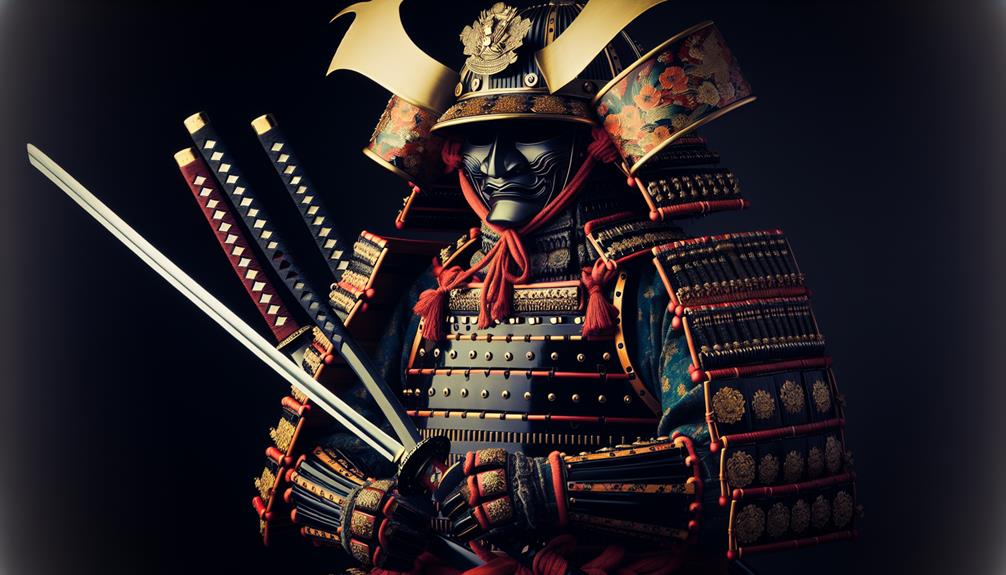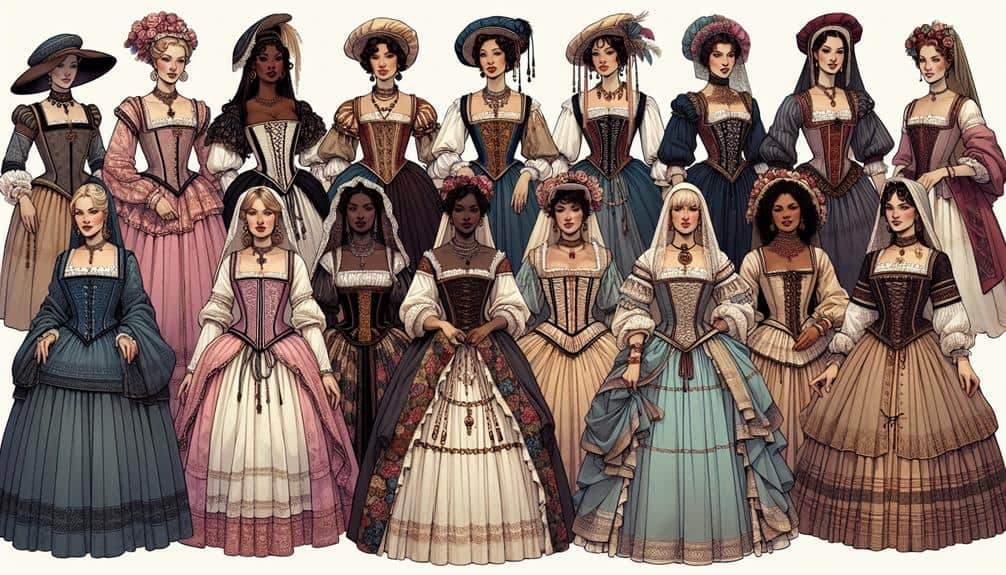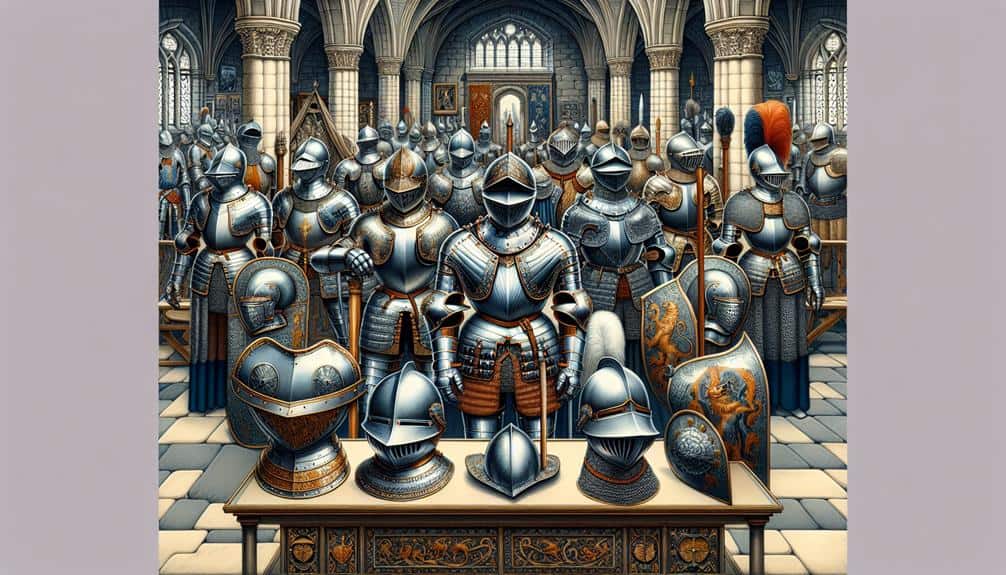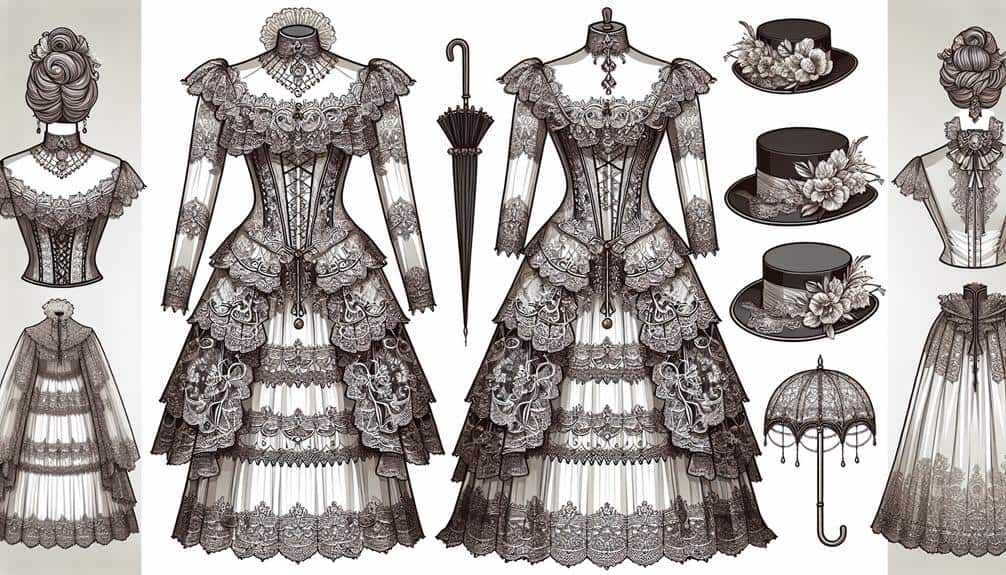Have you ever wondered what lies beneath the intricate layers of a traditional Japanese samurai warrior costume?
Step into the world of ancient Japan as we uncover the secrets behind the authenticity of samurai attire.
From the symbolic significance of each garment to the meticulous craftsmanship involved in creating these iconic ensembles, there is much more to discover than meets the eye.
Explore the fascinating world of samurai costume inspirations and embrace the timeless allure of this legendary warrior attire.
Key Takeaways
- Historical accuracy and authenticity are crucial for samurai costumes, honoring tradition and avoiding cultural appropriation.
- Samurai armor comprises iron, leather, and silk, crafted with meticulous attention to detail for a formidable appearance.
- Fabric choices like silk brocade and leather reflect authenticity, while colors like red, black, white, and gold hold symbolic significance.
- Modern interpretations blend historical essence with contemporary elements, creating a harmonious balance between tradition and innovation.
Historical Accuracy in Samurai Costumes
When creating Japanese Samurai warrior costumes, ensuring historical accuracy is paramount to truly immerse yourself in the rich culture and traditions of these legendary warriors. The authenticity debate surrounding samurai costumes often revolves around the fine line between respectful homage and cultural appropriation.
It's critical to approach the design and creation of samurai costumes with a deep respect for the historical significance they hold.
To stay true to the spirit of the samurai, meticulous attention to detail is essential. Researching authentic materials, colors, and patterns is key to capturing the essence of these noble warriors. Avoiding stereotypes and caricatures is fundamental in honoring the legacy of the samurai and their role in Japanese history.
Key Components of Samurai Armor
Samurai armor comprises several key components essential for both protection and intimidation on the battlefield. When crafting authentic samurai armor, materials and construction techniques play an essential role in ensuring both functionality and visual appeal.
- Materials: Samurai armor was commonly made from materials such as iron, leather, and silk. Iron plates were intricately laced together to form the protective armor, while leather and silk were used for comfort and flexibility.
- Construction Techniques: The armor was meticulously crafted using techniques like riveting and lacing. Skilled artisans spent hours assembling each piece to guarantee a perfect fit for the warrior.
- Helmet: The helmet, known as the Kabuto, often featured a crest or horns to symbolize the warrior's status and intimidate foes.
- Shoulder Guards: The shoulder guards, called Sode, provided protection to the shoulders and upper arms. They were typically attached to the chest armor and allowed for flexibility in movement during combat.
These components, constructed with precision and care, contributed to the formidable appearance and functionality of authentic samurai armor.
Fabric Choices for Authentic Look
For an authentic look when crafting Japanese samurai warrior costumes, selecting the right fabric is essential to capturing the essence of these formidable warriors. Silk brocade is a traditional choice for crafting the elaborate garments worn by samurais. This luxurious fabric, often featuring intricate patterns and designs, adds a touch of elegance and sophistication to the costume, reflecting the status and prestige of the warrior.
In addition to silk brocade, leather armor is another vital fabric choice when recreating a samurai warrior outfit. Leather was commonly used in the construction of the protective armor worn by samurais, providing durability and defense in battle. Incorporating leather elements into the costume, such as chest plates, arm guards, and shin guards, contributes to the overall authenticity of the ensemble.
Symbolism in Samurai Costume Colors
Exploring the symbolic significance of colors in the attire of Japanese samurai warriors adds depth and meaning to their traditional costumes. In samurai costume colors, each hue carries symbolism and cultural significance:
- Red: Symbolizes power, energy, and crucial; often worn by high-ranking samurai to display strength and courage.
- Black: Represents formality, discipline, and mystery; frequently seen in the attire of lower-ranked samurai as a sign of humility and respect.
- White: Signifies purity, honesty, and integrity; worn during ceremonies and rituals to showcase the samurai's moral character.
- Gold: Symbolic of wealth, prosperity, and prestige; used sparingly in accents on the costumes of elite samurai to denote their noble status within society.
Understanding the symbolism behind the colors in samurai attire provides insights into the values and beliefs upheld by these legendary warriors, enriching the cultural tapestry of their traditional costumes.
Modern Interpretations of Samurai Attire
In modern reinterpretations of traditional samurai attire, designers infuse contemporary elements while honoring the historical essence of the iconic warrior costumes. Contemporary twists in samurai attire often involve sleeker silhouettes, innovative fabrics, and modernized color palettes. Designers draw inspiration from the intricate armor worn by samurai warriors, incorporating metallic accents and geometric patterns into their designs to pay homage to the traditional craftsmanship. The fusion of traditional Japanese aesthetics with modern fashion sensibilities results in a unique and sophisticated style that resonates with both history and modernity.
Fashion fusion plays a significant role in modern samurai attire, blending traditional elements like hakama pants and kimono-inspired jackets with modern streetwear influences. This fusion creates a harmonious balance between the old and the new, offering a fresh perspective on the timeless elegance of samurai clothing. By combining traditional craftsmanship with contemporary design techniques, modern interpretations of samurai attire capture the essence of Japanese warrior culture in a way that appeals to a modern audience.
Frequently Asked Questions
Are There Any Specific Rules or Guidelines for Wearing a Samurai Costume in Traditional Japanese Ceremonies or Events?
When participating in traditional Japanese ceremonies or events, it's critical to adhere to the rules of traditional etiquette. Understanding the cultural significance behind wearing a samurai costume is essential to show respect and honor.
What Are Some Common Misconceptions About Samurai Costumes That People May Have?
Common misconceptions about samurai costumes include inaccuracies in historical accuracy and cultural significance. Understanding the symbolism and traditions behind the attire is crucial to appreciate the true meaning and value.
How Have Advancements in Technology Affected the Production and Authenticity of Modern Samurai Costumes?
Embrace the digital era's transformative power on samurai costume crafting. Technology's impact on authenticity is profound. From intricate designs to precise measurements, modern tools elevate the accuracy and detail, ensuring a faithful portrayal.
Are There Any Specific Rituals or Ceremonies Involved in Donning a Samurai Costume?
When donning a samurai costume, you enter a world of tradition and honor. Samurai costume ceremonies are steeped in rituals that pay homage to the warrior spirit. Despite modern technology advancements, the essence of these traditions remains timeless.
How Do Samurai Costumes Differ Based on the Social Status or Rank of the Wearer in Historical Japan?
When it comes to samurai costumes, the design variations were significant based on social status. Higher-ranking samurai had more intricate and elaborate armor, demonstrating their status and power, while lower-ranking samurai wore simpler, more practical attire.



